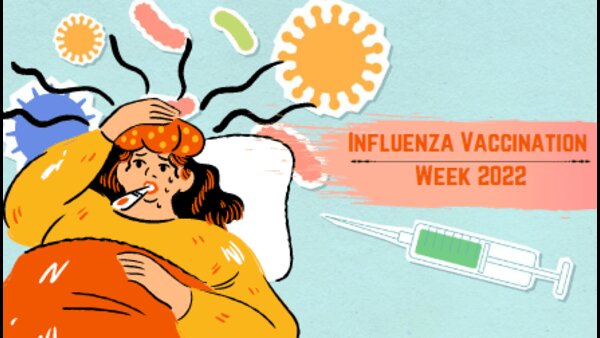Just In
- 1 hr ago

- 3 hrs ago

- 4 hrs ago

- 6 hrs ago

Don't Miss
- Sports
 Sunil Narine Record vs RCB & Stats at Eden Gardens Ahead Of IPL 2024 Match 36
Sunil Narine Record vs RCB & Stats at Eden Gardens Ahead Of IPL 2024 Match 36 - Movies
 Love Sex Aur Dhokha 2 Box Office Collection Day 1: LSD 2 Gets A Poor Opening; Fails To Beat Vidya's Film
Love Sex Aur Dhokha 2 Box Office Collection Day 1: LSD 2 Gets A Poor Opening; Fails To Beat Vidya's Film - Technology
 Best Noise-Cancelling Earbuds Under Rs 5,000: CMF Buds Pro, Redmi Buds 5, Realme Buds Air 5, and More
Best Noise-Cancelling Earbuds Under Rs 5,000: CMF Buds Pro, Redmi Buds 5, Realme Buds Air 5, and More - Finance
 62-Yrs Old Fertilizers PSU Set To Recommend Dividend Rewards, Rises 78% In 1-Yr; Yield 4.49%
62-Yrs Old Fertilizers PSU Set To Recommend Dividend Rewards, Rises 78% In 1-Yr; Yield 4.49% - News
 Punjab Human Rights Panel Issues Notice To ADGP In Sangrur Jail Clash Case
Punjab Human Rights Panel Issues Notice To ADGP In Sangrur Jail Clash Case - Education
 UPMSP Class 10 and 12 Results 2024 Released Today, Check the Details Here
UPMSP Class 10 and 12 Results 2024 Released Today, Check the Details Here - Automobiles
 Tesla CEO Elon Musk's Much-Awaited Visit to India Deferred, Leaving Questions Unanswered
Tesla CEO Elon Musk's Much-Awaited Visit to India Deferred, Leaving Questions Unanswered - Travel
 Journey From Delhi To Ooty: Top Transport Options And Attractions
Journey From Delhi To Ooty: Top Transport Options And Attractions
Exclusive: Influenza Vaccination Week 2022: Expert Explains What It Is About And Which Vaccine To Prefer
Fever, respiratory symptoms, and other systemic symptoms are the hallmarks of the illness known as influenza, which is brought on by the eponymous virus from the Orthomyxoviridae family. The illness strikes every year during the cold season in both the northern and southern hemispheres (seasonal influenza).

It classifies into influenza A, influenza B, and influenza C in accordance with their primary antigenic differences. The seasonal and pandemic human epidemics caused by influenza viruses occur annually. Each year, seasonal influenza epidemics brought on by influenza A and B viruses cause up to 5 million serious cases and thousands of fatalities worldwide.
Clinical prevalence of influenza-like illness (ILI) or laboratory-confirmed influenza is frequently used to calculate vaccine effectiveness (LCI). The wide variety of viruses that cause ILI and the lack of laboratory confirmation present problems, though. Despite this, a recent systematic review and meta-analysis found that populations with influenza vaccination showed a nearly 53% reduction in LCI-related hospitalisation rates in adults between the ages of 18 and 65 and a 37% reduction in rates in those over 65. Hospitalization rates increased in years with greater antigenic variation between vaccine strains and circulating viruses, as the protection provided was less effective.
The best strategy for preventing and controlling influenza is to get vaccinated. Children over two years old and healthy adults benefit from it the most. The seasonal influenza vaccine has a 10% to 60% efficacy rate. When vaccine strains are poorly matched to circulating strains, the efficacy is at its lowest. The FDA has approved both the trivalent and quadrivalent vaccines.
The trivalent vaccine protects against three flu strains: Two influenza A strains and one influenza B strain. The B strain included is based on the strain that researchers anticipate will be the most common each year. The quadrivalent influenza (flu) vaccine is intended to protect against four different flu viruses, two of which are influenza A viruses and two of which are influenza B viruses.
Getting vaccinated against the flu not only protects you, but also those around you who are more vulnerable to becoming seriously ill with the flu, such as babies, young children, people with chronic health conditions, and the elderly. Because the vaccination takes about two weeks to fully take effect, the Centers for Disease Control and Infection (CDC) recommends getting it early in the fall, before flu season begins.
Antigenic drifts and shifts pose the biggest problem for the main influenza prevention and control strategy. Due to waning immunity, annual vaccination is currently advised.
The advantages of vaccinations must be fully understood. Avoid discouraging vaccination for insignificant reasons.
This article has been contributed by DR. HARI KISHAN, MBBS, MD (Internal Medicine), MRCP, Consultant Physician, Kamineni Hospitals, Hyderabad.
-
 disorders cureH3N2: What Are The Long Lasting Effects Of H3N2
disorders cureH3N2: What Are The Long Lasting Effects Of H3N2 -
 disorders cureH3N2 Influenza: Four Reasons Why Experts Are Concerned About H3N2
disorders cureH3N2 Influenza: Four Reasons Why Experts Are Concerned About H3N2 -
 disorders cureH3N2 Influenza Cases Rises In India: Know Symptoms, Precautions
disorders cureH3N2 Influenza Cases Rises In India: Know Symptoms, Precautions -
 wellnessCovid-19 Three Times More Lethal Than Influenza, Study Suggests
wellnessCovid-19 Three Times More Lethal Than Influenza, Study Suggests -
 wellnessCOVID Surge In Southeast Asia: Centre Asks States To Restart Monitoring Influenza-Like Illness And SARI Cases
wellnessCOVID Surge In Southeast Asia: Centre Asks States To Restart Monitoring Influenza-Like Illness And SARI Cases -
 disorders cureEverything You Need To Know About The Common Cold And Flu
disorders cureEverything You Need To Know About The Common Cold And Flu -
 wellnessBlackberries, Onions, Red Wine: Flavonoid-Rich Foods To Combat Flu And Common Cold
wellnessBlackberries, Onions, Red Wine: Flavonoid-Rich Foods To Combat Flu And Common Cold -
 wellness12 Herbal Home Remedies To Fight Bird Flu Or Avian Influenza
wellness12 Herbal Home Remedies To Fight Bird Flu Or Avian Influenza -
 disorders cureSigns That Say It’s More Than Just A Common Cold
disorders cureSigns That Say It’s More Than Just A Common Cold -
 disorders cureInfluenza Type A And B: Differences, Symptoms, Treatment And Prevention
disorders cureInfluenza Type A And B: Differences, Symptoms, Treatment And Prevention -
 disorders cure15 Deadly Viruses In Human History Apart From COVID-19
disorders cure15 Deadly Viruses In Human History Apart From COVID-19 -
 wellness10 Tips On How To Prevent Bird Flu In Humans
wellness10 Tips On How To Prevent Bird Flu In Humans


 Click it and Unblock the Notifications
Click it and Unblock the Notifications



